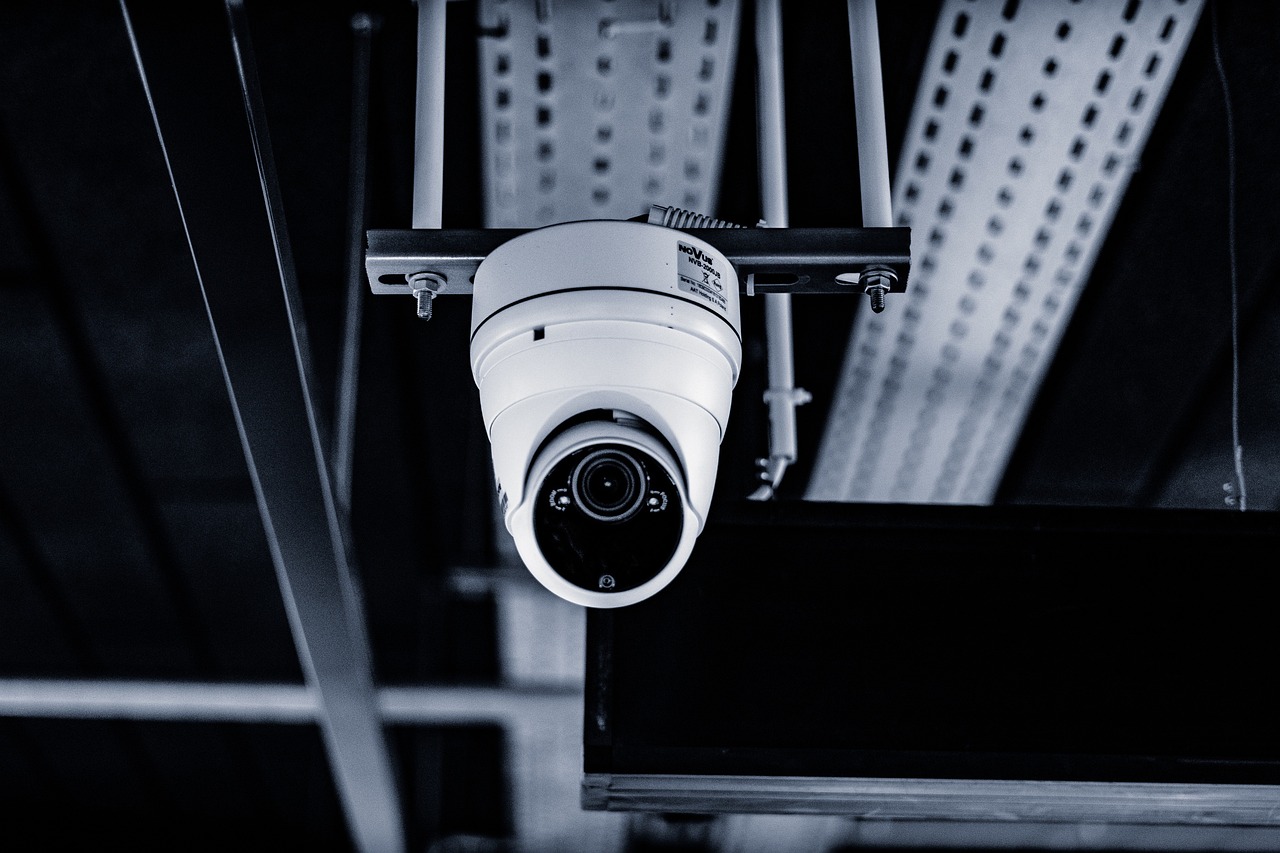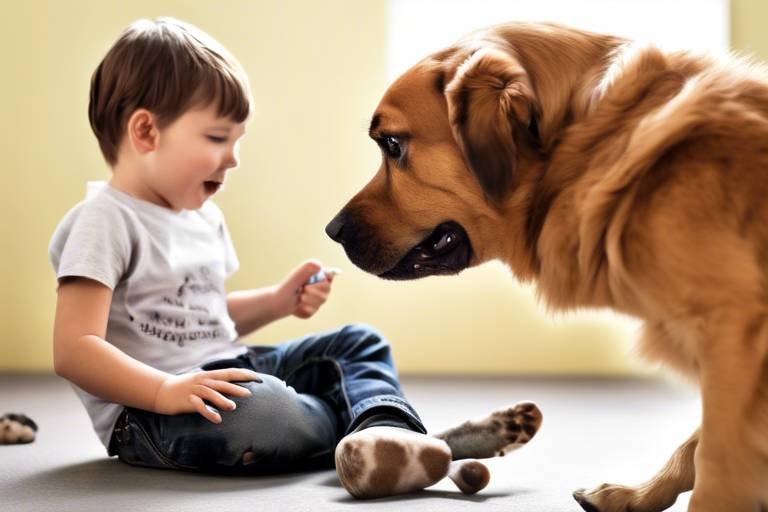How to Help Your Pet Adapt to a New Lifestyle
Change is an inevitable part of life, and just like us, our furry friends can find it challenging to adapt to new situations. Whether you're moving to a new home, welcoming a new family member, or simply altering your daily routine, your pet may feel a mix of excitement and anxiety. The good news is that there are practical strategies you can employ to make this transition smoother for your beloved companion. In this article, we will explore various methods to help your pet adjust to their new lifestyle, ensuring their comfort and well-being throughout the process.
Before you can help your pet navigate changes, it's crucial to understand their unique needs. Pets, much like humans, experience stress and anxiety, and they communicate these feelings in various ways. You might notice changes in their behavior, such as excessive barking, hiding, or even changes in eating habits. Recognizing these signs early on can make a significant difference. Providing a stable environment is essential during transitions. Consider how your pet might feel—like a fish out of water—when everything around them shifts. The more we can do to create a sense of security, the better they will adapt.
A safe space is not just a luxury; it's a necessity for your pet's comfort during times of change. Think of it as their personal sanctuary, a place where they can retreat when the world feels overwhelming. Setting up a designated area in your home can significantly ease their anxiety. This space should be quiet, away from the hustle and bustle of daily activities, and filled with comforting items that belong to your pet.
When selecting a location for your pet’s safe space, consider areas that are less frequented by family members. A cozy corner in a quiet room or a secluded spot in the living area can work wonders. Ensure that this space is equipped with their bed, toys, and food. This setup not only enhances their sense of security but also fosters a calming atmosphere that makes them feel at home.
Familiar items can significantly ease anxiety. Think of it this way: just like a favorite blanket can bring comfort to a child, your pet's favorite toys, blankets, or bedding can provide a sense of familiarity. By incorporating these items into their safe space, you create an environment that feels like home, even amidst the chaos of change.
Consistency is key in helping your pet adjust to a new lifestyle. Maintaining daily routines, including feeding, walking, and playtime, can provide your pet with a sense of normalcy. Imagine how comforting it is to know that some things remain unchanged amidst the chaos! Try to stick to the same schedule you had before the transition as closely as possible. This predictability can be incredibly reassuring for your pet.
Utilizing positive reinforcement can help your pet adapt more easily to new changes. Rewarding and encouraging desired behaviors can make the adjustment process smoother and more enjoyable for both you and your pet. For instance, when your pet explores their new environment or interacts positively with a new family member, offer treats or praise. This not only reinforces good behavior but also builds their confidence as they navigate through changes.
When it comes to introducing new experiences, gradual exposure is the way to go. Think of it as dipping your toes into a pool before diving in. Sudden changes can overwhelm your pet, leading to anxiety and stress. Instead, slowly acclimate your pet to new experiences, ensuring they feel comfortable and secure throughout the process. This might mean taking short trips to new places or introducing new family members one at a time.
Socialization is crucial for pets, especially when adapting to new environments. If you have other animals, consider how to safely introduce your pet to them. Start with short interactions and gradually increase the time they spend together. Positive interactions can help foster a sense of community and comfort, making your pet feel more relaxed in their new surroundings.
Taking your pet to new environments can be beneficial, but it's essential to do so in a way that keeps them calm and confident. Begin with familiar places, like a local park, and gradually introduce them to busier or unfamiliar settings. Always keep an eye on their body language—signs of stress can indicate that it's time to retreat to a quieter space. The goal is to create positive associations with new experiences, making them feel like brave explorers rather than anxious wanderers.
Lastly, monitoring your pet's behavior during transitions is essential. Keep an eye out for any changes, whether they be positive or negative. If your pet seems more anxious than usual or exhibits unusual behaviors, it may be time to consult a professional. Remember, just like us, pets can struggle with change, and seeking help is a sign of a responsible pet owner.
- How long does it take for a pet to adjust to a new environment?
Every pet is different, but it typically takes a few weeks for them to acclimate to changes. - What are the signs that my pet is stressed?
Signs include excessive barking, hiding, changes in appetite, and destructive behavior. - Should I get my pet a new toy during a transition?
Introducing a new toy can help, but make sure it's something they feel comfortable with. - When should I seek professional help?
If your pet's anxiety persists or worsens, it's best to consult a veterinarian or a pet behaviorist.

Understanding Your Pet's Needs
When it comes to our furry friends, understanding their unique needs is paramount. Just like us, pets experience stress and anxiety, especially during significant changes in their environment. Imagine moving to a new house or welcoming a new family member; these transitions can be overwhelming for your pet. It’s essential to recognize the signs that indicate your pet may be feeling anxious or uncomfortable. Some common signs include excessive barking, hiding, or changes in eating habits. By being attentive to these behaviors, you can take proactive steps to ensure their comfort.
Creating a stable environment is key during these transitions. Pets thrive on routine and familiarity, so maintaining a consistent schedule can help ease their anxiety. For example, if you usually feed your dog at 7 AM, try to stick to that time even amidst the chaos of moving boxes. This consistency provides a sense of normalcy that can be incredibly comforting for your pet.
Moreover, it's crucial to consider your pet's individual personality. Just like people, pets have their own unique quirks and temperaments. Some pets may adapt quickly to new situations, while others might take a bit longer. Take the time to observe your pet's behavior and adjust your approach accordingly. For instance, if your cat tends to be shy, it may be beneficial to give them extra time to explore their new surroundings at their own pace.
In addition to observing behavior, you can also create a safe space for your pet. This area should be quiet and free from disturbances, allowing your pet to retreat whenever they feel stressed. By providing a designated spot, you’re giving them the opportunity to feel secure and relaxed. Consider incorporating some of their favorite toys or blankets into this space to make it feel more like home.
Ultimately, understanding your pet's needs is about being attentive and responsive. By recognizing signs of stress, maintaining a stable routine, and creating a safe space, you can help your beloved companion navigate through life's changes with greater ease. Remember, your pet looks to you for guidance and support, so being proactive in addressing their needs will go a long way in ensuring their well-being.

Creating a Safe Space
When it comes to helping your pet adjust to a new lifestyle, one of the most effective strategies is to create a safe space. This is a designated area where your furry friend can retreat to feel secure and relaxed amidst the chaos of change. Think of it as their personal sanctuary, a cozy nook that offers a sense of comfort and familiarity. It’s essential to understand that pets, much like humans, can feel overwhelmed by new experiences, and having a safe haven can significantly alleviate their stress.
To set up this special area, you’ll want to consider a few key factors. First, think about the location. Ideally, this space should be in a quiet corner of your home, away from the hustle and bustle of daily activities. It should be a place where your pet can observe their surroundings without feeling threatened. A corner of a room or a cozy nook in a less-trafficked area can work wonders. The goal is to create an environment that feels safe and inviting, allowing your pet to escape when they need a break.
When selecting the perfect spot for your pet's safe space, consider the following tips:
- Away from Noise: Choose a location that is quiet and free from loud noises, such as the television or heavy foot traffic.
- Comfortable Temperature: Ensure the area is neither too hot nor too cold. A cozy corner with good ventilation can be ideal.
- Accessibility: Make sure your pet can easily access this space whenever they feel the need to retreat.
Next, you’ll want to fill this safe space with familiar items. Incorporating your pet's favorite toys, blankets, or bedding can work wonders in making them feel more at home. Familiar scents play a crucial role in comfort; they can evoke feelings of safety and security. For instance, placing their favorite blanket in the designated area can provide a sense of warmth and belonging. It’s like wrapping them in a hug from their favorite human!
Here are some ideas for items you might include in your pet's safe space:
- Comfortable Bed: A soft, plush bed can provide a perfect spot for your pet to curl up and relax.
- Toys: Their favorite toys can distract them and provide comfort during stressful times.
- Familiar Scents: Adding items with your scent, like an old t-shirt or towel, can help soothe your pet.
Another important element to consider is maintaining routine. Consistency is key when it comes to helping your pet feel secure. Regular feeding times, daily walks, and play sessions can provide a sense of normalcy amidst the upheaval of lifestyle changes. Imagine how unsettling it would be to suddenly have your schedule flipped upside down; pets feel the same way! By keeping their routine intact, you’re providing them with a framework of stability that can help them adjust more smoothly.
Here are some tips to keep in mind:
- Stick to Feeding Times: Try to feed your pet at the same times each day, even during transitions.
- Regular Walks: Maintain a consistent walking schedule to provide exercise and mental stimulation.
- Playtime: Allocate specific times for play to keep your pet engaged and happy.
Creating a safe space for your pet is not just about providing a physical area; it’s about fostering an environment where they can feel calm and secure. By recognizing their needs, incorporating familiar items, and maintaining a consistent routine, you’re setting the stage for a smoother transition. Remember, your pet relies on you for comfort and reassurance during these times of change, so take the time to create a sanctuary that truly feels like home.
Choosing the Right Location
Choosing the right location for your pet's safe space is a crucial step in helping them adapt to a new lifestyle. Imagine your pet as a little explorer, navigating a world that can sometimes feel overwhelming. By providing them with a cozy nook where they can retreat, you’re giving them a lifeline—a place to recharge and feel secure. But how do you determine the best spot? It's all about balance and understanding your pet's needs.
First and foremost, consider the quietness of the area. Pets, just like humans, can feel anxious in noisy environments. A corner of your living room might seem inviting, but if the TV is blaring or kids are running around, it might not be the best choice. Instead, look for a location that is away from high-traffic areas in your home. A cozy corner in a bedroom or a dedicated space in a home office could work wonders. Think of it like creating a peaceful sanctuary amidst the chaos of everyday life.
Next, think about comfort. The location should be easily accessible for your pet, especially if they are older or have mobility issues. Ensure that it’s not too high up or far away from where you spend most of your time. You want them to feel included, not isolated. Place their bed or blanket in a spot where they can see you but still feel safe. This way, they can keep an eye on their favorite human while enjoying their own little retreat.
Don't forget about temperature and lighting. Pets can be sensitive to extreme temperatures, so choose a location that stays comfortable throughout the day. A spot that gets too hot in the summer or too cold in the winter can make your pet feel uneasy. Natural light can be a mood booster, but too much direct sunlight can lead to overheating. Consider using curtains or blinds to control the light while keeping the area airy and bright.
Lastly, think about incorporating their favorite items into this space. Familiar toys, blankets, or even a piece of your clothing can create a sense of belonging. It’s like giving them a warm hug when they need it most. When setting up, you might want to include:
- A comfortable bed or blanket.
- Some toys that they love.
- Food and water bowls within easy reach.
By taking these factors into account, you’ll be well on your way to creating a safe haven for your pet. Remember, the goal is to help them feel calm and secure in their new environment. With a little thought and creativity, you can transform any corner of your home into a tranquil retreat for your furry friend.
Incorporating Familiar Items
When your furry friend is faced with a new lifestyle, one of the most effective ways to ease their anxiety is by incorporating familiar items into their environment. Think of it as giving your pet a warm hug with the things they love most. Familiar items—like their favorite toys, blankets, or bedding—can create a sense of security that helps them navigate the unknown. Imagine how you would feel if you were suddenly placed in a new home without your favorite belongings; it would be disorienting, right? The same goes for your pet.
To help your pet feel more at home, start by identifying which items they cherish the most. This could include:
- Toys: Whether it's a squeaky toy or a beloved stuffed animal, having these items around can provide comfort and a sense of normalcy.
- Blankets: A familiar blanket can carry the scent of home, making your pet feel safe and secure.
- Bedding: Their usual bed should be placed in their designated safe space to give them a cozy retreat.
Once you've gathered these items, strategically place them in your pet’s safe space. The goal is to create a little haven where they can retreat when the world feels overwhelming. It’s essential to ensure that this area is quiet and away from the hustle and bustle of the household. By doing this, you’re not just providing a physical space, but you’re also offering emotional support. Your pet will associate this space with comfort and safety, making it easier for them to adapt to the changes around them.
Moreover, consider rotating some of their favorite items. Just like humans, pets can get bored. By occasionally swapping out toys or blankets, you keep their environment stimulating while still holding on to the familiarity they crave. This small change can make a big difference in their mood and overall well-being. So, take a moment to assess what your pet loves and use those items to create a nurturing atmosphere. It’s a simple yet powerful way to show them that, despite the changes, their happiness matters.
Maintaining Routine
When it comes to helping your pet adjust to a new lifestyle, maintaining a consistent routine is one of the most effective strategies you can employ. Just like humans, pets thrive on predictability. Imagine being in a new city without a map or a schedule—confusing, right? Your furry friend feels the same way when their daily habits are disrupted. By keeping their routine as stable as possible, you provide a sense of security and normalcy that can ease their stress during transitions.
Start by sticking to regular feeding times. Pets often have internal clocks, and sudden changes in meal schedules can lead to anxiety or even digestive issues. If your pet is used to being fed at 7 AM, try to keep that time consistent, even if you’ve moved to a new home. This helps them know what to expect and when, which can be incredibly reassuring.
Next, consider their exercise and playtime. Regular walks or play sessions not only help keep your pet physically healthy but also mentally stimulated. Engaging in familiar activities can provide comfort amidst changes. For instance, if your dog loves their morning jog, continue that tradition. Likewise, if your cat has a favorite time for interactive play, honor that schedule. These activities can act like anchors in their day, helping them feel more grounded.
Additionally, try to maintain your pet’s sleep schedule. Pets are creatures of habit, and a change in their sleeping environment can disrupt their rest. If you’ve moved to a new home, ensure their bed or sleeping area is set up in a quiet, familiar space. This will encourage them to settle down and feel secure, allowing for better sleep and, in turn, better behavior.
To help you visualize the importance of routine, here’s a simple table outlining a sample daily routine for your pet:
| Time | Activity |
|---|---|
| 7:00 AM | Feeding |
| 7:30 AM | Morning Walk |
| 8:00 AM | Playtime |
| 12:00 PM | Midday Snack |
| 5:00 PM | Evening Walk |
| 6:00 PM | Dinner |
| 8:00 PM | Quiet Time/Bedtime Routine |
Finally, remember that consistency is key. If you need to make adjustments to your pet’s routine, do so gradually to avoid overwhelming them. By providing a stable routine, you’re not just helping your pet cope with change; you’re also strengthening the bond you share. After all, in the world of pets, love, and security often come wrapped in the familiar rhythm of daily life.
- How long does it take for a pet to adjust to a new routine? Every pet is different, but generally, it can take anywhere from a few days to a few weeks for them to adapt.
- What should I do if my pet shows signs of anxiety during transitions? Consult with a veterinarian or a pet behaviorist for tailored advice and consider incorporating calming techniques.
- Can I introduce new routines while maintaining some consistency? Yes! Gradually introduce new activities while keeping core routines stable to ease the transition.
Positive Reinforcement Techniques
When it comes to helping your pet adapt to a new lifestyle, can be game-changers. Instead of focusing on negative behaviors, why not celebrate the good ones? This approach not only fosters a stronger bond between you and your furry friend but also makes the transition smoother for them. Think of it like this: would you rather be rewarded for good behavior or scolded for mistakes? Exactly! Your pet feels the same way.
One effective method is to use treats as incentives. For instance, if your dog is getting used to a new environment, reward them with a tasty treat every time they explore a new corner of the house or show curiosity about their surroundings. This creates a positive association with their new space. But remember, moderation is key! Overdoing it can lead to unwanted weight gain, so keep an eye on those treat portions.
Another fantastic technique is verbal praise. Pets thrive on your attention and approval. When they exhibit desired behaviors, such as using their new bed or interacting positively with a new family member, shower them with praise. Use an enthusiastic tone, and don’t hesitate to throw in a few belly rubs or ear scratches. This kind of affection reinforces their behavior and helps them feel secure in their new routine.
Additionally, incorporating playtime as a reward can be incredibly effective. For instance, if your cat is adapting to a new schedule, engage them in their favorite game after they successfully navigate a change. This not only reinforces their good behavior but also provides an outlet for their energy, making the adjustment period less stressful for both of you.
To illustrate these techniques, here’s a simple table outlining different positive reinforcement methods:
| Technique | Description | Example |
|---|---|---|
| Treats | Using food rewards for good behavior. | Giving a treat when your dog explores a new area. |
| Verbal Praise | Encouraging your pet with positive words. | Exclaiming "Good job!" when your pet uses their new bed. |
| Playtime | Rewarding with play to reinforce positive behavior. | Playing fetch after your dog meets a new family member. |
Finally, consistency is crucial. Make sure everyone in the household is on the same page when it comes to rewarding your pet. If one person praises them for a behavior while another scolds them, it can create confusion and stress. Think of it like a team sport: everyone needs to work together towards the same goal for the best results!
In conclusion, using positive reinforcement techniques is a powerful way to help your pet adjust to lifestyle changes. By focusing on the good and rewarding desired behaviors, you not only enhance your pet's confidence but also make the transition a more enjoyable experience for both of you. So, get ready to shower your furry friend with love, treats, and praise as they embark on this new adventure!
- What is positive reinforcement? Positive reinforcement involves rewarding a behavior to encourage its repetition, making it a popular training method for pets.
- How long does it take for a pet to adjust to a new environment? Adjustment periods can vary, but typically range from a few days to a few weeks, depending on the pet's personality and the extent of the change.
- Can I use toys as positive reinforcement? Absolutely! Toys can be a great way to reward your pet and engage their interest during the adjustment process.

Introducing New Experiences Gradually
When it comes to helping your furry friend adapt to a new lifestyle, one of the most effective strategies is to introduce new experiences gradually. Just like humans, pets can feel overwhelmed when faced with sudden changes. Imagine being thrown into a completely new environment without any preparation—it's a recipe for anxiety! By taking a step-by-step approach, you can make transitions smoother and less stressful for your pet.
Start by introducing small changes in their environment. For instance, if you’re moving to a new home, let your pet explore one room at a time rather than the entire house all at once. This method allows them to familiarize themselves with their surroundings at their own pace. You might say it’s like dipping your toes into a swimming pool instead of jumping in headfirst! By doing this, you give your pet the chance to adjust without feeling overwhelmed.
Another important aspect of gradual introduction is to **monitor your pet's reactions**. Pay close attention to their body language and behavior. Are they curious, excited, or hesitant? Look for signs of stress, such as excessive barking, hiding, or pacing. If you notice any of these signs, it may be best to slow down the process and give them a little more time to adjust. Your pet’s comfort should always be the priority!
As you introduce new experiences, consider incorporating positive reinforcement techniques. Reward your pet with treats, praise, or playtime when they successfully adapt to a new situation. This not only encourages them to embrace change but also strengthens the bond between you and your pet. Think of it as giving them a little high-five for being brave!
For instance, if you’re planning to take your pet to a new park, start with short visits. Gradually increase the duration of your outings as your pet becomes more comfortable. You can also introduce them to new sounds and sights in a controlled manner. Perhaps play recordings of different noises or take them on car rides to get them used to the idea of traveling. The key is to make these experiences enjoyable rather than stressful.
In addition to new environments, socialization with other pets is crucial. When introducing your pet to other animals, do so in a safe and controlled manner. Start by allowing them to observe from a distance before gradually bringing them closer. This way, your pet can gauge the other animal's behavior and decide when they’re ready to interact. Remember, patience is essential here! Just like humans, some pets are more social than others, and that’s perfectly okay.
In summary, by introducing new experiences gradually, you can help your pet feel secure and confident during transitions. This approach not only eases their anxiety but also fosters a sense of adventure and curiosity. So, take your time, be observant, and make the journey a positive one for both you and your beloved pet!
- How long should I take to introduce new experiences? The timeline can vary based on your pet's personality. Some pets may adapt quickly, while others may need weeks. Always prioritize their comfort.
- What signs should I look for to know if my pet is stressed? Look for behaviors like excessive barking, hiding, or changes in appetite. If your pet seems anxious, take a step back and slow down the introduction process.
- Can I use treats to encourage my pet during new experiences? Absolutely! Positive reinforcement through treats and praise can motivate your pet and make new experiences more enjoyable.
- How can I help my pet socialize with other animals? Start with controlled introductions in neutral environments and observe their reactions. Always ensure both pets are comfortable before allowing close interactions.
Socialization with Other Pets
When it comes to helping your pet adapt to a new lifestyle, plays a crucial role. Just like humans, pets thrive on social interactions, and introducing them to new furry friends can be a game-changer. Imagine your pet as a sponge, soaking up the vibes and behaviors of other animals. This exposure not only helps them become more comfortable in various situations but also enriches their lives with new experiences.
However, socialization should be approached with care. You wouldn’t throw a shy child into a crowded playground without preparation, right? The same goes for your pet. Start by introducing them to one new pet at a time in a controlled environment. This could be a friend’s dog or a neighbor’s cat. Observe their body language closely; signs of stress or discomfort, such as whining, growling, or hiding, indicate that they might need more time to adjust.
It’s essential to create a positive atmosphere during these introductions. Use positive reinforcement techniques to reward your pet for calm behavior. A little treat or praise can go a long way in making them feel more secure. Remember, you want to associate new experiences with good feelings, not fear. For instance, if your dog meets another dog and behaves well, shower them with affection and a tasty treat. This builds their confidence and encourages them to repeat the behavior.
Additionally, consider the benefits of group classes or playdates. Enrolling your pet in a training class or a supervised playgroup can provide structured socialization opportunities. These settings are designed to promote positive interactions while ensuring safety. Your pet will learn how to communicate with others, understand boundaries, and develop essential social skills. Plus, it’s a great way for you to meet fellow pet owners!
As you embark on this socialization journey, keep in mind that every pet is unique. Some may take to new friends like a duck to water, while others might need more time to warm up. Be patient and allow your pet to set the pace. With time, they will likely become more comfortable and confident in their interactions with other animals.
In conclusion, socialization is a vital component of helping your pet adapt to a new lifestyle. By introducing them to other pets gradually and positively, you’re not only enhancing their social skills but also enriching their lives. So, take a deep breath, grab those treats, and watch your pet blossom into a more confident and well-adjusted companion!
- How do I know if my pet is ready to socialize with other animals? Look for signs of curiosity and calmness. If they seem relaxed and interested, it might be a good time to introduce them to new pets.
- What should I do if my pet shows aggression during socialization? It's important to remove them from the situation immediately and consult with a professional trainer or behaviorist for guidance.
- Can socialization help with behavioral issues? Yes, socialization can reduce anxiety and improve behavior by teaching pets how to interact appropriately with others.
Exploring New Environments
Introducing your pet to new environments can be an exciting yet daunting experience. Imagine taking your furry friend on a mini-adventure, where every corner holds a new scent, sound, or sight. However, just like us, pets can feel overwhelmed when faced with unfamiliar surroundings. To ensure that your pet remains calm and confident during these outings, it's essential to approach the process with care and consideration.
Start small. Begin by taking your pet to nearby parks or quiet areas where they can explore at their own pace. Gradually increase the distance and complexity of the environments you visit. For instance, if you're planning a trip to a bustling city, don’t jump straight into the chaos. Instead, take them to a quieter neighborhood first, allowing them to acclimate to new sights and sounds without feeling rushed or stressed.
During these outings, keep an eye on your pet's body language. Signs of anxiety may include:
- Tail tucked between legs
- Excessive barking or whining
- Pacing or inability to settle down
- Refusing to walk or explore
If you notice any of these behaviors, it might be time to retreat to a more familiar setting. Remember, your pet's comfort is the priority.
Additionally, consider bringing along some of your pet's favorite items, such as a beloved toy or a familiar blanket. These items can provide a sense of security amidst the newness. The scent of home can be incredibly comforting and can help your pet feel more at ease as they navigate their new surroundings.
Another effective strategy is to incorporate positive reinforcement during these outings. Bring along some treats to reward your pet for calm behavior. For example, if your dog walks calmly past a group of people without reacting, offer a treat and lots of praise. This not only reinforces good behavior but also creates a positive association with new experiences.
As you explore new environments, always prioritize safety. Ensure that your pet is on a leash or in a secure carrier, especially in busy areas. This not only protects them from potential dangers but also helps you maintain control, which can be reassuring for both of you.
In summary, exploring new environments with your pet can be a rewarding experience if approached thoughtfully. By starting small, monitoring their behavior, bringing familiar items, and using positive reinforcement, you can help your pet feel secure and confident in unfamiliar settings. Remember, the goal is to make these adventures enjoyable for both you and your furry companion!
Q1: How can I tell if my pet is stressed in a new environment?
A1: Look for signs such as excessive barking, hiding, or refusal to engage with their surroundings. If your pet seems unusually anxious, it's best to retreat to a quieter area.
Q2: What should I bring when exploring new environments with my pet?
A2: Always bring water, snacks, a leash, and some familiar items like toys or blankets to help your pet feel secure.
Q3: How can I help my pet feel more comfortable in new places?
A3: Gradual exposure is key. Start with quieter areas and reward your pet for calm behavior. Familiar items can also help ease their anxiety.

Monitoring Behavioral Changes
Monitoring your pet's behavior during transitions is essential for their well-being. Just like humans, pets can experience stress and anxiety when faced with new situations. It’s crucial to stay observant and recognize any changes that might indicate your furry friend is struggling to adapt. For instance, if your once playful pup suddenly becomes withdrawn or your usually social cat starts hiding, these could be signs that something's amiss.
To effectively monitor these changes, consider keeping a behavior journal. This can help you track your pet's mood, energy levels, and interactions over time. Note any specific incidents or changes in routine that coincide with shifts in their behavior. By doing this, you can identify patterns that may need addressing. Here’s a simple table to illustrate what you might include in your journal:
| Date | Behavior Observed | Possible Triggers | Notes |
|---|---|---|---|
| 2023-10-01 | Hiding under the bed | New baby in the house | Try to give more attention |
| 2023-10-02 | Excessive barking | Moved to a new neighborhood | Introduce to neighbors |
In addition to keeping a journal, be on the lookout for specific behavioral signs that might indicate your pet is struggling. Here are some common changes to monitor:
- Changes in Appetite: Is your pet eating less or more than usual? A sudden change can indicate stress.
- Increased Aggression: If your pet is becoming more irritable or aggressive, it might be feeling overwhelmed.
- Excessive Grooming: Over-grooming can be a sign of anxiety, especially in cats.
- Destructive Behavior: Chewing furniture or scratching walls can indicate distress.
Recognizing these signs early can help you intervene before the situation escalates. If you notice persistent changes in your pet’s behavior, it might be time to consult with a veterinarian or a professional animal behaviorist. They can provide tailored advice and strategies to help your pet cope with the changes. Remember, the sooner you address these issues, the better your pet will adapt to their new lifestyle.
In conclusion, being proactive about monitoring your pet's behavior during transitions is key. By staying observant and documenting changes, you can create a supportive environment that helps your furry friend feel safe and secure. After all, our pets rely on us to be their advocates, especially when life throws new challenges their way!
Q: How long does it typically take for a pet to adjust to a new environment?
A: The adjustment period can vary widely depending on the pet's personality and past experiences. Some pets might adapt within a few days, while others may take several weeks or even months.
Q: What should I do if my pet shows signs of depression?
A: If your pet seems persistently sad or withdrawn, consult a veterinarian. They can help determine if there are underlying health issues or recommend behavioral interventions.
Q: Are there specific training techniques I can use to help my pet adjust?
A: Yes! Positive reinforcement techniques, such as rewarding your pet for calm behavior, can be effective. Gradual exposure to new experiences also helps.
Q: How can I tell if my pet is stressed?
A: Look for signs such as excessive barking, hiding, changes in eating habits, or destructive behavior. These can all indicate that your pet is feeling stressed.
Frequently Asked Questions
- How can I tell if my pet is stressed during a lifestyle change?
Pets often show signs of stress through changes in behavior. Look for signs like excessive barking, hiding, changes in eating habits, or destructive behavior. If you notice these signs, it's important to provide extra comfort and attention to help them adjust.
- What should I include in my pet's safe space?
A safe space should include your pet's bed, their favorite toys, and familiar blankets. This area should be quiet and away from high traffic zones in your home, allowing your pet to retreat when they feel overwhelmed.
- How important is maintaining a routine for my pet?
Maintaining a routine is crucial for your pet's sense of security. Regular feeding, walking, and playtime help create a predictable environment, which can significantly reduce anxiety during transitions.
- What are some positive reinforcement techniques I can use?
Positive reinforcement can be as simple as giving treats or praise when your pet exhibits calm behavior during transitions. This encourages them to repeat those behaviors and helps them feel more secure in their new environment.
- How can I introduce my pet to new experiences without overwhelming them?
Gradually introduce new experiences by taking small steps. Start with short outings or brief introductions to new pets, and slowly increase the exposure as your pet becomes more comfortable. Always monitor their reactions and provide reassurance.
- What should I do if my pet shows significant behavioral changes?
If you notice significant changes in your pet's behavior, such as aggression, withdrawal, or excessive anxiety, it's important to consult with a veterinarian or a professional animal behaviorist. They can provide guidance tailored to your pet's specific needs.



















